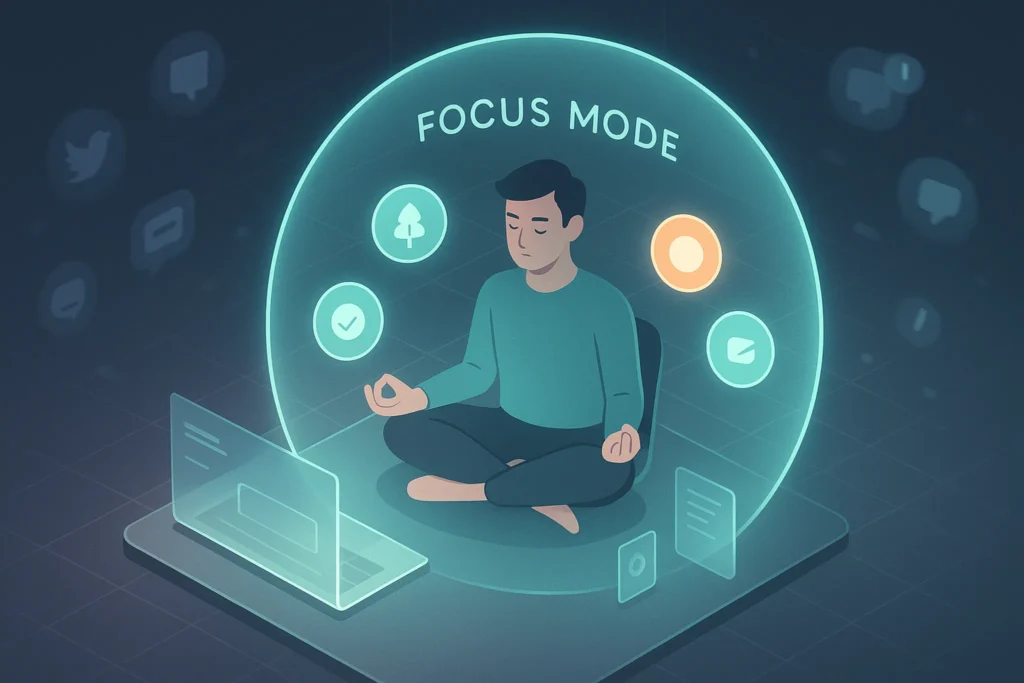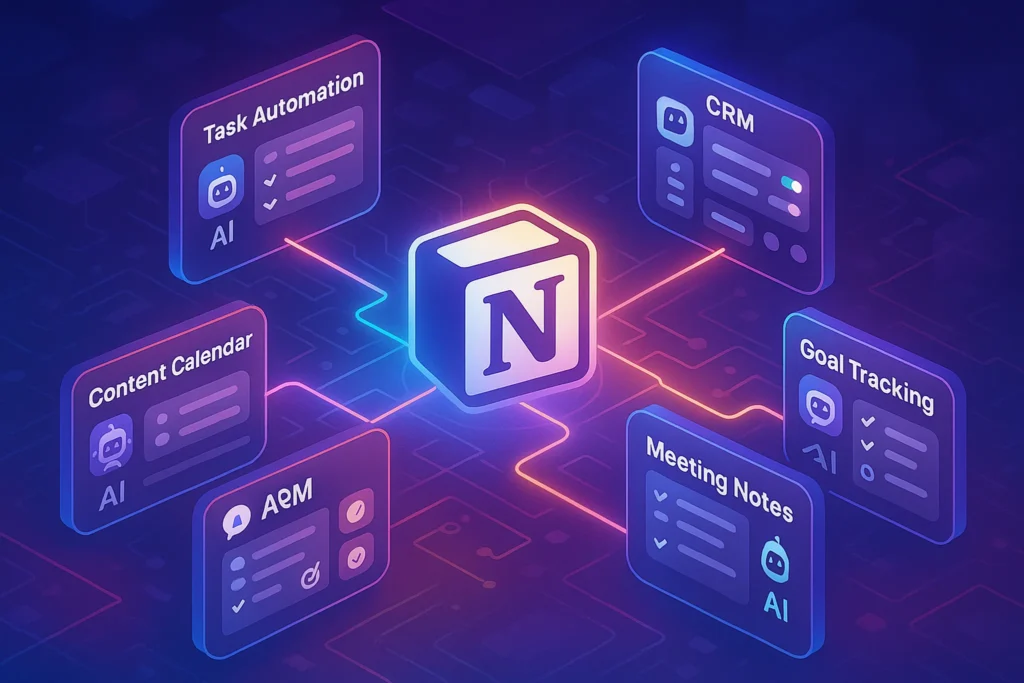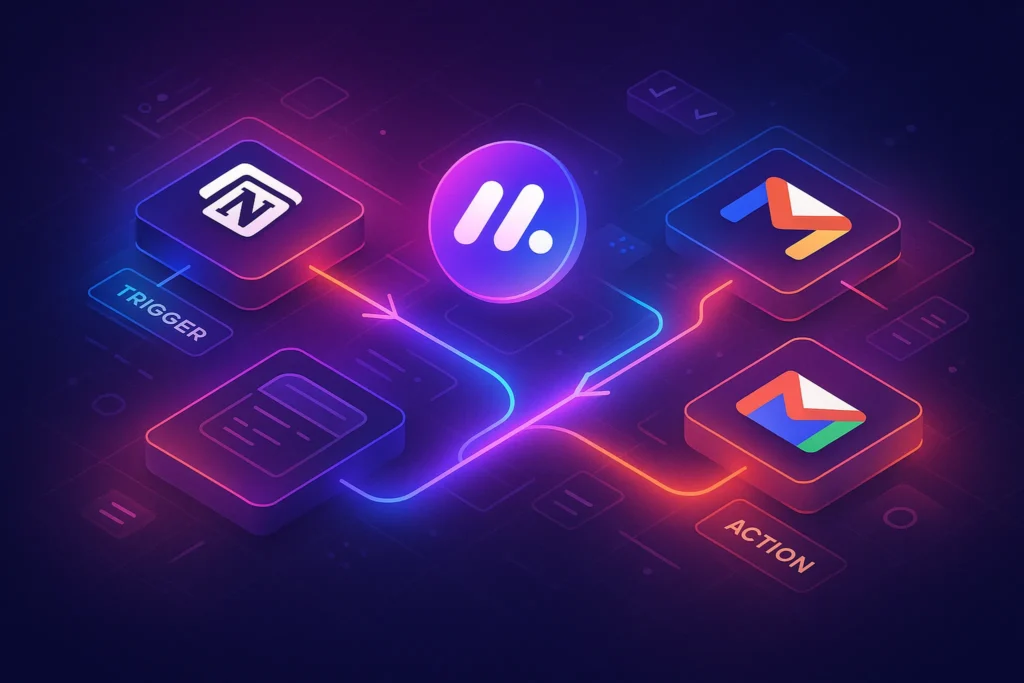-This post may contain affiliate links. If you click on one and make a purchase, I may earn a small commission at no extra cost to you.-
📱Introduction: Understanding the Digital Distraction Loop
In a world designed to grab your attention, staying focused isn’t just difficult — it’s a daily battle.
Every swipe, ping, badge, and buzz triggers a powerful psychological loop: cue → craving → response → reward. This is the same loop that drives habits like smoking or emotional eating — and it’s built into your phone.
These interactions activate your brain’s dopaminergic system—the same system triggered by sugar, gambling, and even addiction-forming drugs. The mere anticipation of novelty gives a quick spike of dopamine, which your brain begins to crave repeatedly.
Multiply this by hundreds of micro-stimuli a day, and you’re not just distracted — you’re rewired for shallow focus.
Every time your phone vibrates or your screen lights up, your attention is hijacked. But what’s really happening under the hood of your mind is far more complex—and far more intentional.
Tech companies have mastered the psychological loop pioneered by behavioral scientists: cue → craving → response → reward. This loop is responsible for all habitual behavior—whether checking Instagram, doomscrolling Twitter, or swiping through notifications “just in case.”
Over time, your capacity for deep, undivided attention weakens. You’re no longer reacting to meaningful stimuli—you’re reacting to engineered noise.
Even worse: you begin to associate boredom with discomfort and compulsive checking with relief. It’s a neurological trap that rewires your relationship to time, focus, and work.
In this attention economy, you are the product. Reclaiming your focus requires more than willpower — it requires design. That starts with your digital setup, environment, and daily rhythm.
Let’s break the loop.
One of the biggest problems with digital distraction isn’t just the lost time — it’s the fracturing of attention. Each interruption breaks your mental momentum, making it harder to enter a state of flow. We explored this in detail in The Science of Productivity, where techniques like time-blocking and decision fatigue management are critical for sustained output.
🧠 What Constant Interruptions Do to Your Brain
Modern neuroscience confirms it: digital interruptions don’t just waste time—they alter your cognitive architecture.
Each distraction leaves behind attention residue. As coined by Dr. Sophie Leroy, this term describes how your brain remains partially occupied by the previous task, even after switching away from it. That residue reduces your working memory and focus capacity.
Even worse, constant task-switching increases cortisol levels (your stress hormone), contributes to mental fatigue, and lowers patience. This leads to reactive behavior and faster burnout.
A UC Irvine study showed that typical knowledge workers switch tasks or windows over 1,100 times per day, losing an average of 23 minutes per interruption. That’s not just inefficiency—that’s cognitive debt.
If you’ve ever reread the same sentence five times or struggled to remember what you were doing 20 minutes ago, now you know why.
Modern interruptions aren’t just annoying — they have measurable cognitive effects. Neuroscience research reveals that:
-
Each distraction costs between 23–27 minutes to fully recover from, especially during deep work
-
Frequent task switching increases cortisol (stress hormone) and glucose metabolism in the prefrontal cortex
-
Notification-driven environments lead to lower working memory scores and reduced task accuracy
This phenomenon is called Attention Residue. When you shift from Task A to B (even briefly), part of your brain stays attached to Task A, reducing your full cognitive presence.
Here’s the brutal irony: even checking a notification that you ignore still triggers residue.
So even if you don’t reply to that text, the cognitive price is already paid.
This is why focus isn’t just about discipline — it’s about protecting your neurochemistry.
In our post on Top Productivity Hacks, we showed how structuring focus windows with intentional recovery cycles (not just hustle) leads to better long-term mental performance.
🛠 Tech-Enabled Focus Tools You Should Try
Ironically, while tech distracts us — it can also save us.
Here are science-aligned, practical tools that create digital friction, promote mindfulness, and build intentional usage patterns.
🔕 Do Not Disturb & Focus Modes (Built-In Power Tools)
Don’t just mute calls—customize deep work profiles. On iOS, link Focus Modes to app limits and custom lock screens. On Android, integrate with Digital Wellbeing and schedule automatic blocks.
Even this small habit can cut passive checking by over 50%.
Every modern smartphone includes a Focus Mode or Do Not Disturb setting. But most users treat these as emergency tools — not daily allies.
Here’s how to reclaim them:
-
Create custom modes like “Deep Work,” “Writing,” or “No Socials”
-
Allow only essential apps or contacts through
-
Schedule recurring activation (e.g., 8–11am daily)
These modes turn your phone into a supportive environment, not a trigger minefield.
🚀 Minimalist Launchers: Declutter the Digital Entry Point
Your home screen is your behavioral command center. And most are designed for distraction.
By switching to a minimalist launcher, you eliminate visual clutter and reduce temptation.
Top options:
-
Niagara Launcher (Android) – Vertical, clean, shows only the essentials
-
Focus Launcher – Launches a single productivity app in full-screen, no other access
-
iOS Screen Time + Shortcuts – Customize your iPhone layout to hide all non-essential apps during work blocks
👀 Bonus tip: Reorder your apps weekly. Disrupting the default muscle memory can reduce impulsive checking.
🧱 App Blockers: Build Your Digital Wall
No matter how strong your intention is, some habits are just too sticky.
That’s why app and website blockers remain some of the most effective tools in the digital focus arsenal.
✅ Options to explore:
-
Freedom: Cross-device blocking for sites and apps
-
FocusMe: Incredibly granular rules, Pomodoro timers, and “forced focus” modes
-
StayFocusd (Chrome): Set daily time limits for specific sites — and once you’re out, you’re out
These tools aren’t just for “addicts.” They’re for anyone who respects their focus enough to protect it.
🧘♂️ Mindfulness Apps: Rewire Reactivity
Mindfulness isn’t about being calm — it’s about being aware before reacting.
Apps like:
-
Headspace
-
Calm
-
Insight Timer
offer short, science-backed meditations for attention training. Just 10 minutes of daily mindfulness practice has been shown to improve attentional control, working memory, and even emotional regulation.
Want to see how this ties into habit building and brain chemistry? Our post on How to Build a Daily Routine That Actually Sticks explains how meditation can anchor the entire day.
🔁 How to Build a Distraction-Free Daily Flow
Let’s put it all together.
The key to lasting focus isn’t perfection — it’s pattern design. By combining tools, rituals, and recovery cycles, you can train your brain to enter deeper states of attention more often.
Here’s a sample daily flow built on cognitive science:
⚙️ Morning Focus Zone (7:30–10:00 AM)
-
Start with a minimalist home screen — no social icons
-
Activate Do Not Disturb / Focus Mode
-
Launch one tool only: Notes, Docs, or Task app
-
Use Freedom or FocusMe to block high-risk apps and websites
-
Run a 60–90 minute deep work sprint
-
Afterward: 15–20 minutes of low-stimulus recovery (stretching, walking, no screens)
🔄 Midday Reset (12:30–2:00 PM)
-
Quick mindfulness session (Headspace or Insight Timer)
-
Eat mindfully, away from screens
-
Time-block shallow work (email, admin) into one focused batch
🎯 Afternoon Flow Anchor (3:00–4:30 PM)
-
Short focus sprint using Pomodoro (with StayFocusd running in background)
-
Keep phone in another room if possible
-
End with a review habit (check-ins, tracking progress)
By doing this consistently, your default behavior becomes focused, not reactive.
Remember: your goal isn’t to eliminate all distractions — it’s to design your environment so they don’t win.
🧠 Deep Dive: The Neuroscience Behind Focus Loss
The brain toggles between two main modes:
-
Task-Positive Network (TPN): attention, problem-solving
-
Default Mode Network (DMN): daydreaming, mental wandering
Each distraction reactivates DMN—pulling you out of focus and into noise. Repeated toggling weakens attention pathways and increases mental fatigue.
A 2016 University of Texas study found that even a silent smartphone, face down, reduced working memory and cognitive capacity—simply due to background vigilance.
This is why creating an environment for focus isn’t about “discipline”—it’s about neural load management.
💡 Bonus Hacks for Everyday Digital Clarity
-
Grayscale Mode: Turn off color triggers, reduce visual craving
-
Rename Apps: “Instagram → Time Sink”
-
Intent Notes: Before unlocking phone, ask: “Why am I doing this?”
-
Soundscaping: Use brown noise, binaural beats (e.g., Brain.fm, Noisli)
-
Screen-Free Zones: Bedroom, kitchen, or reading corners
-
Weekly App Audits: Remove what no longer serves your focus
These small tweaks reduce unconscious reactivity and build digital intentionality.
❓ FAQ: Nerds Ask, We Answer
🧠 Nerd Verdict
We live in an era of infinite stimuli — where billions are spent to hijack our attention.
But you don’t need to live at the mercy of pings, scrolls, and dopamine loops. With the right mix of neuroscience-backed tools, digital hygiene, and intentional rituals, you can reclaim your focus and reprogram your day.
Distraction is engineered.
But so is clarity.
You choose which one runs your life.
💬 Would You Bite?
What’s the one digital distraction you’re struggling with most — and what will you try this week to overcome it?
Drop a comment and share your distraction detox experiment. 👇



